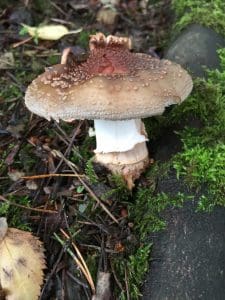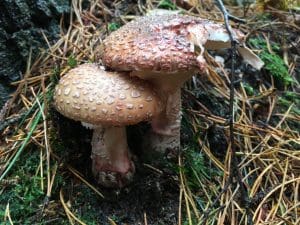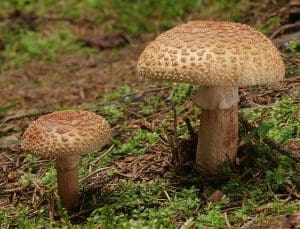The Blusher Mushroom / Summer / Autumn / Edible ( when cooked)
The Blusher Mushroom is a fantastic edible mushroom that have a beef-like flavour once cooked. They live within the Amanita family of mushrooms which have some deadly toxic mushrooms in, so serious caution is advised if you’re planning to pick and eat these ones. However, there is some key differences to help identify this mushroom apart from the toxic lookalikes which we’ll cover properly below – The main one being the pink blushing on the damage.
Family
Amanitaceae
Common Name
The Blusher
Botanical Name
Amanita Rubescens
Meaning of Botanical Name
Rubescens means reddening, which refers to the colour change of the mushroom flesh when it is touched or damaged and is exposed to the air, a chemical reaction occurs turning the flesh from white to a pinkish red.
Family
Amanitaceae
Food Plant of…
The blusher is often eaten by slugs and favourable to maggot infestation
Distribution
The Blusher is very common and widespread throughout Britain and Ireland as well as in mainland Europe and in North America.
Habitat
Blushers are mycorrhizal with a wide range of trees, it particularly likes coniferous trees growing on poor acidic soil.
Video of Foraging Blusher Mushrooms
Physical Characteristics of the Blusher Mushroom
Cap:
The cap is buff brown to a pinkish brown colour, with movable white spots, the spots can wash off when very wet. Ranging from 5 to 20cm across. The cap is domed shaped when young becoming very slightly funnel shaped with age. Where nibbled by slugs etc the cap flesh will bruise a pinking red colour like blush that ladies put on their cheeks hence its common name.
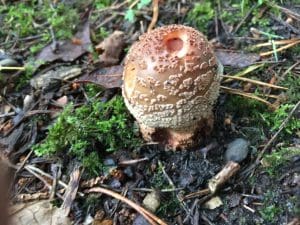
Stem:
The stem has a striped white veil (skirt), if the skirt is smooth it’s not the blusher. The stem is between 1-2cm in diameter and is white above the veil becoming darker brown toward the base with small scales.The base is bulbous with scales which are the remnants of the egg which the mushroom grew from. Like the cap the flesh will bruise reddish pink when cut or damaged.
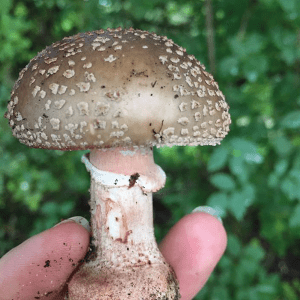

Gills:
The gills are white, free and crowded. The gills are white in colour but have pinkish red spots where insects have damaged them.
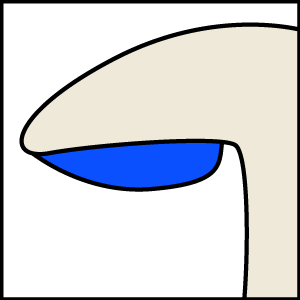
Smell:
Mushroomy.
Spores:
White.
Known hazards:
The Blusher contains hemolytic toxin which causes anemia if eaten raw and must be cooked well before eating. 5 mins at high heat minimum.
Potential look a likes
The Panther Cap (amanita pantherina) skirt of the blusher is striped and the panther cap is smooth, the spots easily move on the blusher and not so on the panther cap, the blusher shows signs of reddening (blushing) when damaged or cut, the panther cap does not change colour chen damaged or cut.
Grey Spot Amanita, the grey spot amanita does not change colour when it is cut or damaged.
For more info on the Amanita family click here
Edible Uses of the Blusher Mushroom
The Blusher is a good edible mushroom but must be cooked thoroughly due to the toxins, which are destroyed by cooking (the whole mushroom needs to reach 80C for it to be safe to eat)
I like to use it when I’m looking for a beef mushroom flavour – my absolute favourite is to use it in a mushroom / beef ragu where it adds a real depth of flavour & texture to the dish.
Notes:
I’ve actually come to pick this mushroom for consumption more and more regularly, when heavily cooked like an oldish piece of meat it produces a really meaty texture and flavour itself. What’s even better is that most people are fairly terrified of this mushroom meaning no one else picks it – giving us free reign on its harvest.



